Random Noise 15

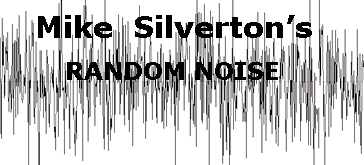
Acoustic Revive’s RWL-3 Room Tuning Panel,
Power Reference Power Cord and
RTP-2 Ultimate Power Tap
What’s Japanese for sorcerer?
Greetings, fellow enthusiasts, from one lucky audio geek. I’m assuming that my good opinion of the RR-77 Ultra Low Frequency Pulse Generator, among other Acoustic Revive goodies, has occasioned this bonanza.
Which reminds me to apologize for a glib remark. In my comments about the RR-77, I appropriated “weird science” from something Aurum Acoustics’ Derrick Moss emailed regarding the mysteries and misdirections of acoustic isolation, with reference to the steel points he developed for his Integris CDP (my player). The “weird” of “weird science” suggests multiples of strange. Improbable. Goofy. Mad-scientist shenanigans.
There’s nothing weird about Ken Ishiguro’s designs. Unusual, yes, perhaps even baffling. But if you’ve been around our little principality for any time at all you know that Audiophilia boasts a number of developments and practices that have defied, and continue to defy, conventionality. Some even make a difference, and – mirabile dictu! – sometimes for the better. For example, who’d have thought that demagnetizing a digital disc or subjecting it to a rush of hot air awash in negative ions, or attaching a virtual ground to one’s CDP, or bathing one’s listening room with a 7.83 Hz electronic pulse would affect how recordings sound? I’m referring to Acoustic Revive’s RD-3 Disc Demagnetizer, Rio-5 II Tourmaline Negative Ion Generator, RGC-24 Grounding Conditioner, and the drop-dead astonishing RR-77, all of which, here at le poste d’écoute, arrived before today’s assault on common sense.
Hot damn! The FedEx man!
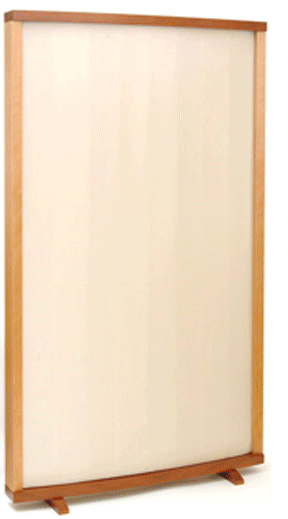 Three cartons, two larger, one smaller. The larger: the two nicely boxed RWL-3 acoustic panels stand, unpacked, just shy of four feet tall by 2.5 feet wide. Apart from their color, they resemble the Quad ESL 63. If you click on Clement Perry’s photo essay of his visit to Acoustic Revive, the last page shows the panels in a maximal array. AR’s Web site, acoustic-revive.com, provides a less than exhaustive description of what goes into these slabs. The smaller: Power Reference power cords, RPT-2 Ultimate Power Taps (line conditioners), and REM-8 EMF Cancellers. My next report will cover Acoustic Revive’s interconnect, speaker cable and REM-8.
Three cartons, two larger, one smaller. The larger: the two nicely boxed RWL-3 acoustic panels stand, unpacked, just shy of four feet tall by 2.5 feet wide. Apart from their color, they resemble the Quad ESL 63. If you click on Clement Perry’s photo essay of his visit to Acoustic Revive, the last page shows the panels in a maximal array. AR’s Web site, acoustic-revive.com, provides a less than exhaustive description of what goes into these slabs. The smaller: Power Reference power cords, RPT-2 Ultimate Power Taps (line conditioners), and REM-8 EMF Cancellers. My next report will cover Acoustic Revive’s interconnect, speaker cable and REM-8.
Having attached the feet (there’s a wall-mounting option), I positioned the panels behind my WATT / Puppy Eights, making no other change to the system. I put on a disc I’m familiar with. To tell you that it sounded different states the case anemically. After having sampled a number of familiar discs, I can report that everything I’ve played sounds different. As for the pleasure quotient, I’ve clocked more sweet-spot hours in the past few weeks than in the preceding few months, but I’m already ahead of myself in that I’ve factored the power cords and line conditioners into my euphoria.
But we have to start somewhere
To begin, then, with the panels. In reporting on this and that I’ve mentioned the stereo image. While it’s always been good, now it’s better focused. I’ve a better sense of stability. Instrumentalists and vocalists sound more lifelike. And I have a heightened perception of midrange riches, along with a better sense of low-end solidity. And, most important, it’s an all-around easier system to listen to. In an exchange of thoughts about the panels, Clement Perry used the term “silky.” I cannot disagree, if we understand silky to mean other than euphonic. The system retains its snap, crackle and pop. The panels are doing something for sure, but they’re soaking up nothing, at least nothing I’m reluctant to part with.
To put that in relative terms, before the panels’ inclusion the system was upwardly tipped. It’s a perception to which I’d have objected before the RWL-3s’ arrival. But it cannot be denied. For the most emphatic evidence I can offer, my wife Lee is actually coming into the room to kick back and listen. I assure you, my fellow enthusiasts, this marks the dawn of a new and better day. Domestically, I mean. Our global descent into the crapper proceeds apace. I just read a review of Paul Theroux’s latest railway travel book in which the author sees the world through which his train passes as dingy, disorderly and impoverished, which calls to mind Voltaire’s recommendation that, the world being what it is, we’re better off tending our gardens – in our case, our aural gardens. But I did vote for Obama and wish the man well.
While I feel safe in stating that the two RWL-3 panels have brought about the most pronounced change yet to the listening room, I’m also obliged to confess that I was impatient to check out the power cords and line conditioners. The RWL-3 pair, which require no break-in, told their story in short order, and a lovely story it is. Like all cables, the Power Reference power cords profit from use. Inasmuch as it’s difficult to differentiate between power cords and the line conditioners they connect with, I cannot say whether the two RTP-2 Ultimate Power Taps also do better after a proper burn-in. I can say that, en suite, it’s a killer combo.
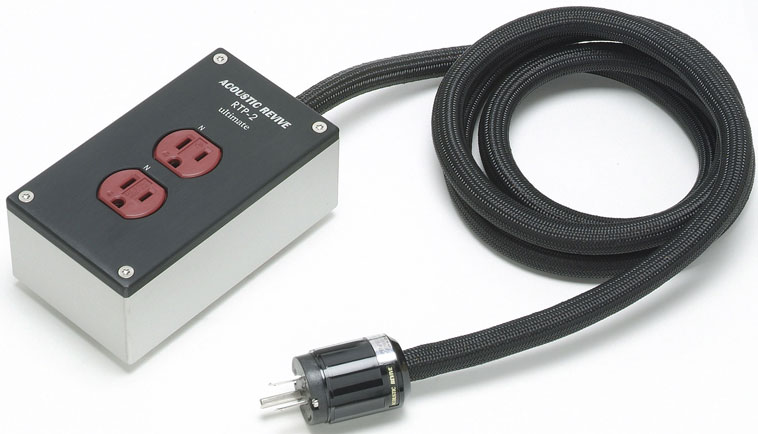 The RTP-2 is a line conditioner like no other. If you haven’t already, read Russell Lichter’s thoroughgoing report on the RTP-4 (with two rather than the RTP-2’s one duplex outlet) and have another look at Clement Perry’s photo essay. In addition to the elegant Oyaide hardware Acoustic Revive modifies by way of selective cryogenics and additional plating, the machined duralumin case encapsulates a bed of tourmaline, green carborundum, and quartz, which, in combination, is said to cancel powerline nasties. The RGC-24 Grounding Conditioner’s disc contains a similar mix. So far as I’m aware, it’s a unique approach to noise elimination, and it seems to work like a charm.
The RTP-2 is a line conditioner like no other. If you haven’t already, read Russell Lichter’s thoroughgoing report on the RTP-4 (with two rather than the RTP-2’s one duplex outlet) and have another look at Clement Perry’s photo essay. In addition to the elegant Oyaide hardware Acoustic Revive modifies by way of selective cryogenics and additional plating, the machined duralumin case encapsulates a bed of tourmaline, green carborundum, and quartz, which, in combination, is said to cancel powerline nasties. The RGC-24 Grounding Conditioner’s disc contains a similar mix. So far as I’m aware, it’s a unique approach to noise elimination, and it seems to work like a charm.
Anecdote break
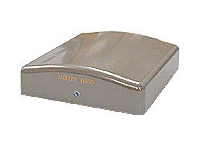 A forum thing happened on the way to the Funny. I’ve been using the disc demagnetizer, negative ion generator and virtual ground for a number of months, and the ultra low frequency pulse generator for somewhat less time. In the midst of my listening sessions, I put on Heinz Holliger’s Violin Concerto with soloist Thomas Zehetmair, the composer conducting the SWR Symphony Orchestra, ECM New Series 1890, released in 2004. Wonderful music, but it didn’t sound right: not really awful but a touch flattened, constricted and congested. As I say, just a touch, but certainly not the sound I had anticipated. I remembered this as a well recorded disc.
A forum thing happened on the way to the Funny. I’ve been using the disc demagnetizer, negative ion generator and virtual ground for a number of months, and the ultra low frequency pulse generator for somewhat less time. In the midst of my listening sessions, I put on Heinz Holliger’s Violin Concerto with soloist Thomas Zehetmair, the composer conducting the SWR Symphony Orchestra, ECM New Series 1890, released in 2004. Wonderful music, but it didn’t sound right: not really awful but a touch flattened, constricted and congested. As I say, just a touch, but certainly not the sound I had anticipated. I remembered this as a well recorded disc.
Here’s what happened. The weather looked iffy, so I turned off the amps, CDP and AR units before I left the house for the afternoon. In firing up the system when I got back, I had neglected to turn on the RR-77. Now and then the skeptic within asks, can this device really and truly accomplish what I’m pretty sure I hear it doing merely by emitting an electronic pulse – the so-called Schumann Resonance? I turned the RR-77 back on. The disc regained its old allure. I had performed a test all the more valid for its being unintentional.
We pick up where we left off
The panels did their transformative thing with Nordost’s Valhalla balanced interconnects, Tyr speaker cables (similar in construction to Nordost’s more expensive Valhalla speaker cables), Vishnu and Brahma power cords, and BlackNoise 2500 and Extreme line conditioners in place. I mention this merely to reassure. If you’re using cabling and line conditioning you’re happy with, as I have been with the goods just listed, I wouldn’t think of urging you to ditch the lot and go whole hog for Acoustic Revive. In my opinion, which I arrive at parochially via this sound system in this room, I’m confident that the RWL-3 Room Tuning Boards (to call them by their proper name) will make their contribution felt with any combination of quality cabling and line conditioning.
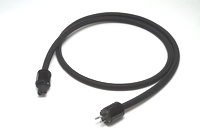 But the imp of perversity reminds us that Acoustic Revive’s power cords and line conditioners sprang from the same imagination that gave us these remarkable panels. While I’ve yet to install their interconnects and speaker cables, I can tell you at this early stage that AR’s power cords and line conditioning mesh with the panels’ virtues in a synergistic fashion. They all seem to bear the same sonic stamp: the most attractive midrange I’ve yet achieved; deep, beautifully defined bass; sweet yet meticulously detailed highs; a soundstage you want to reach out and touch. (I put the RWL-3 in the plural because I’m using two – with space only for two. One’s a possibility, as are a half-dozen.)
But the imp of perversity reminds us that Acoustic Revive’s power cords and line conditioners sprang from the same imagination that gave us these remarkable panels. While I’ve yet to install their interconnects and speaker cables, I can tell you at this early stage that AR’s power cords and line conditioning mesh with the panels’ virtues in a synergistic fashion. They all seem to bear the same sonic stamp: the most attractive midrange I’ve yet achieved; deep, beautifully defined bass; sweet yet meticulously detailed highs; a soundstage you want to reach out and touch. (I put the RWL-3 in the plural because I’m using two – with space only for two. One’s a possibility, as are a half-dozen.)
A sprinkling of magic or a whole lot of science?
I pose the questions. Answers are quite another matter. Enough to mention that tourmaline appears in several of Ken Ishiguro’s designs, as does silk. The RWL-3’s grille cloth consists of an ultra-fine silk textile said to contain tourmaline, which is said in turn to enhance the panels’ effectiveness. So far as I’m aware, designwise, the panels are unique. The innovations don’t stop there. I’m familiar with many fewer high-end power cords than our hobby has to offer. However, I hazard to guess that nothing out there quite resembles Ishiguro’s conception, incorporating, as it does, three strands of oval, single-core, annealed copper wire (specifically PCOCC-A, a uni-crystal copper extruded by the Ohno Continuous Casting method) under a woven silk sleeve itself enclosed under a Teflon-coated copper coil. There’s more to it than that, including a black mesh overlay and Oyaide hardware. For a more detailed explanation and look, acoustic-revive.com.
Moving right along: Nordost’s Valhalla interconnects and Tyr speaker cables are still in place. After the recommended number of burn-in hours (between 50 and 100), the system, via its five AR power cords and two AR line conditioners, is producing ravishing results. In terms of wakefulness and sleep, Lee and I are on a circadian cycle. It’s light, we’re up, it’s dark, we retire, and that’s only a mild exaggeration. The urbanites among you will find my bedtime ludicrous and my arise-time appalling. But, as a preshrunk authority, I’m here to tell you, God’s-honest truth, that listening to quiet, well recorded, beautifully performed music before first light is an experience like none other. In evidence, a gorgeous Naxos released in 2006, volume two of John Dowland’s lute music performed by Nigel North [Naxos 8.557862]. The instrument’s distinctive textures within a richly ambient space are immeasurably exquisite. The panels are in no way subtractive. Nothing’s withheld. And the AR power cords and line conditioners conjoin as soulmates.
Another much too early session with Morton Feldman’s Crippled Symmetry (1983), a masterpiece if ever one was. Bridge 9002 A/B, a two-CD set released in 1999, features members of the unfortunately named California EAR Unit: Dorothy Stone, flute, bass flute; Arthur Jarvinen, vibraphone, glockenspiel; Vicki Ray, piano, celesta. It’s an especially Romantic reading in which the music flourishes. “Hushed volume, vivid but subtly muted colors and slow tempos only heighten the effect of individual sonorities,” from John Rockwell’s excellent notes. “Feldman chose his colors instinctively but with fanatical precision.” To report that I sat enraptured through 87 minutes of music, hearing it for the first time in more than a manner of speaking, tells you something about the sound system’s uptick in texture and finesse.
Lest I’ve lulled you into a pleasant reverie, in the US, the RWL-3 panels are $950 each. A two-meter Power Reference power cord lists for $725, and I’m using five. Two RTP-2 Ultimate Power Taps, at $1295 each, bring the total to mucho dinero (MSLPs courtesy of LotusGroupUSA.com, Acoustic Revive and Oyaide’s American distributor.) The panels seem to me well priced. Quite apart from what they do for the room, they’re large and well made. The $725 power cord is hand-assembled (see Clement Perry’s photo essay) and unique in its application of quality materials. Among its other distinctions, the line conditioner is milled from an ingot of duralumin, which would be of little interest if the thing didn’t perform as well as it does. The same can be said of everything here.
What into where, and final impressions
To summarize, the RWL-3 Room Tuning Panels are operating in concert with five Power Reference power cords and two RTP-2 Ultimate Power Taps. Three of the power cords connect the Integris CDP and two mono NuForce amps to the Power Taps; the remaining two connect the Power Taps to the wall outlets, for the present, four FIM 880 duplexes. I want to check out Oyaide outlets in the near future. Of the audio system’s four dedicated lines, two are in use at present. The NuForce mono pair occupies one RTP-2; the Integris CDP, the other.
Luscious midrange notwithstanding, the system sounds more energetic – from the low end on up, snappier, dynamically subtler, more explosive when it should be. Before Acoustic Revive’s multi-faceted input, the room was a touch bass shy. Given the welcome differences these products have brought about, I’m eager to comment on other AR designs for the next outing. This will include the REM-8 EMF Canceller, RIQ 5010 and RIQ 5010W Natural Quartz Insulators, smoky and clear respectively, XLR 1.5 SPA Single-Core Line Cable (interconnect), and SPC-PA 2.0 Single-Core Speaker Cable.
You can’t judge a book or an audio component by its cover. If the item isn’t sheathed in opulent armor, the audiophile may indeed see it as a mass-market interloper. By high-end audio’s macho-bling standards, several Acoustic Revive products are not what you’d describe as eye-candy. The disc demagnetizer, negative ion generator, Schumann Resonance generator (which is what I’d like to begin calling the RR-77), and EMF canceller – to be covered in my next review – don’t aspire, heftwise, to the high end’s standard. The RTP Ultimate units are the exception: they’re beefy because they need to be, likewise the virtual ground. Don’t be fooled by minimal packaging. This is all potent stuff.
Finally, an amusing misspelling – amusing to me at least. Throughout these remarks I’d been writing Ken Ishiguro’s name as Ishiguru. Subconscious mischief? A guy who can come up with this kind of stuff deserves to be called a guru, or maybe a magus, or maybe even a sorcerer.

![]()
Don’t forget to bookmark us! (CTRL-SHFT-D)
Stereo Times Masthead
Publisher/Founder
Clement Perry
Editor
Dave Thomas
Senior Editors
Frank Alles, Mike Girardi, Key Kim, Russell Lichter, Terry London, Moreno Mitchell, Paul Szabady, Bill Wells, Mike Wright, Stephen Yan, and Rob Dockery
Current Contributors
David Abramson, Tim Barrall, Dave Allison, Ron Cook, Lewis Dardick, Dan Secula, Don Shaulis, Greg Simmons, Eric Teh, Greg Voth, Richard Willie, Ed Van Winkle, and Rob Dockery
Music Reviewers:
Carlos Sanchez, John Jonczyk, John Sprung and Russell Lichter
Site Management Clement Perry
Ad Designer: Martin Perry





Be the first to comment on: Random Noise 15